Graham C. Wiggins, DPhil, (1962-2016) led the radio-frequency (RF) engineering core at our Center from 2008 until his unexpected and untimely death on September 6, 2016.
Graham Wiggins had two passions: music and science. He earned a doctorate in solid-state physics from Oxford University in 1990 and, for a decade afterward, pursued a career as a musician. He returned to physics in 2003, joining Dr. Larry Wald’s lab at Massachusetts General Hospital to design MRI coils.
At MGH, Dr. Wiggins quickly built a reputation for constructing arrays of record-breaking density. His 32-element head array, based on a pattern of polygons similar to that of a soccer ball, captured the field’s attention by marrying innovative geometry with decisive gains in signal-to-noise ratio, acquisition speed, and image resolution. Soon afterward, he introduced a 96-element array based on the geometry of carbon-240 fullerene. The magazine Popular Science described the coil as a “marriage between Trojan battle gear and Medusa” that could “visualize the brain at a resolution six times that of a conventional MRI and up to 10 times as fast.” Scientific papers documenting both devices have amassed hundreds of citations.
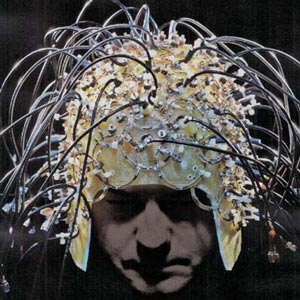
These feats of engineering were also eyed by Dr. Daniel Sodickson, then on the lookout for a scientist to lead a new RF laboratory at NYU School of Medicine. In 2008, after some courting, Dr. Wiggins signed on to join our group, bringing with him a unique mix of playful creativity and ironclad standards.
As director of the RF engineering core, Dr. Wiggins assembled and led a team in ideation, design, and evaluation of MRI hardware. He was a hands-on, comb-through-the-data investigator. One was more likely to find him ironing copper circuits at the lab bench or running MRI experiments at the 7T console than to spot him sitting at his desk.
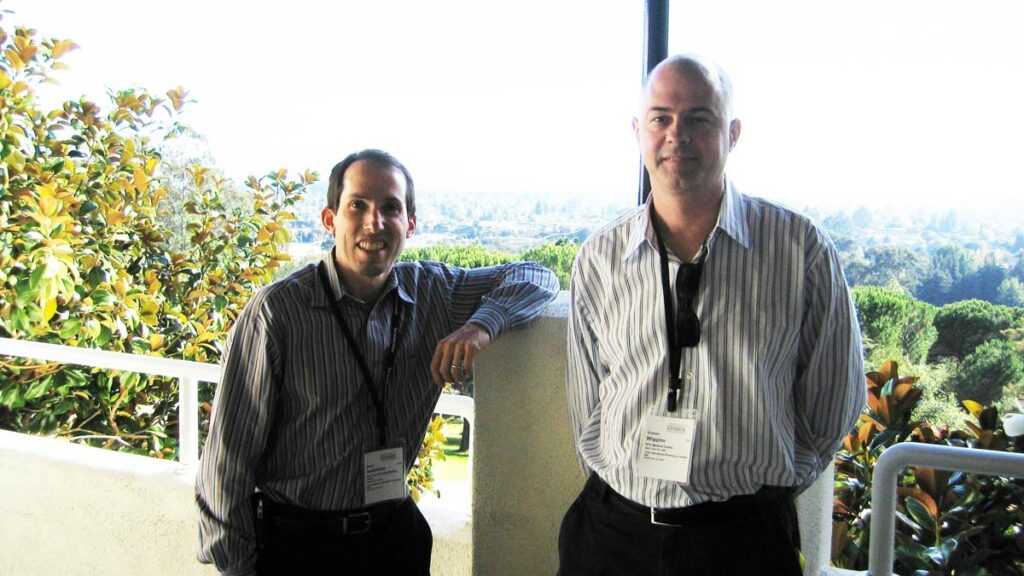
Dr. Wiggins championed rationality and scientific rigor in a field largely considered more art than science. In a discipline in which building a new device doesn’t always mean building a better one, he disparaged sloppily engineered hardware by remarking that one could acquire an image with a wire coat hanger.
He expected his protégés to work as methodically as he did. Whenever possible, he would interview candidates to the RF core in their own labs in order to personally inspect their craftsmanship. His focus on quality could make him unyielding, but it also attracted a formidable group of scientists and engineers to NYU, where a “Wiggins way” of coil design and evaluation was taking shape.
His staunch rationalism coincided with vivid imagination. If a wild idea could make it through what colleagues called a “Graham inquisition,” Dr. Wiggins would pursue it with giddy excitement and unflagging thoroughness. In one case, the RF core devoted years of effort to the construction of a 124-element detector array to be placed along the bore of an MRI scanner—a concept diametrically opposed to that of closely-fitting coils that Graham had pioneered. The “boreliner” taught the engineers valuable lessons but ultimately failed and is now on permanent display in our RF lab.
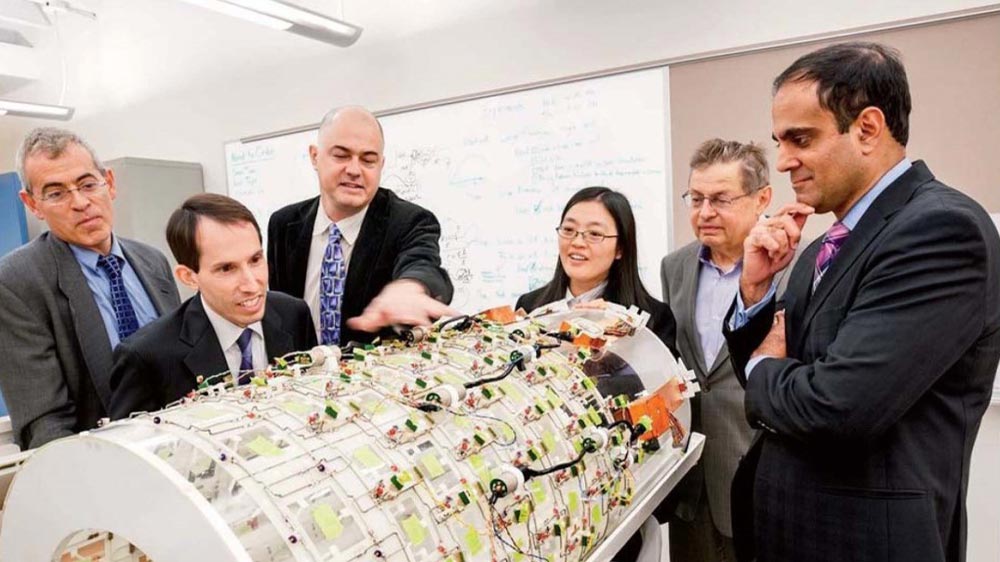
The pursuit of such moonshots did not distract Dr. Wiggins and his team from regularly building exemplary coils for daily delivery of care, showing dual commitment to clinical practice and technical development rarely balanced in research scientists.
Unsuccessful investigations also didn’t dampen Dr. Wiggins’s ambition to understand and build ultimate high-performance detectors and transmitters. Not satisfied with the traditionally incremental approach in which new RF coils merely improved on the old, he sought, together with colleagues, to derive the properties of an ideal RF coil from Maxwell’s theory of electrodynamics. Much of his team’s investigative work between 2011 and 2016 was devoted to formulating an “optimality principle” that would describe the limits of maximum coil performance and set a standard against which physical devices could be engineered and evaluated. He presented this work alongside Dr. Sodickson at the 2016 Gordon conference.
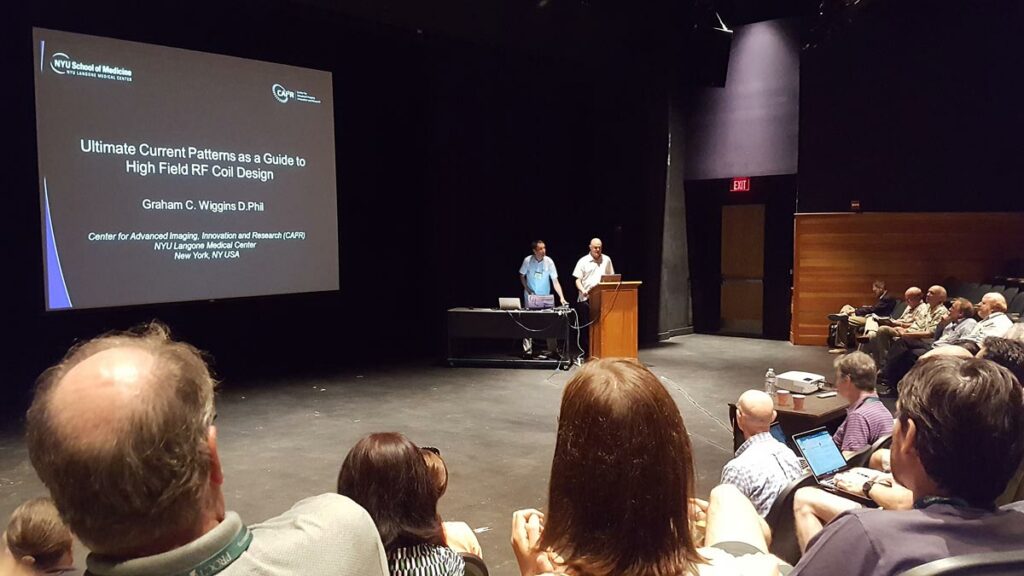
Before becoming a master of dense parallel array design, Graham was known for merging the sound of the didgeridoo with rock and jazz. He had taken interest in the aboriginal instrument as an undergraduate student of physics at Boston University. In time, he learned to play the didgeridoo, visited Australian native tribes to learn more about its origins, and even studied the physics of its distinctive sound. In his late twenties he found himself at a fork in the road with a doctorate and a record deal. His dual passions for science and music can perhaps be gleaned in his stage name, Dr. Didg.
In some respects, Dr. Didg and Dr. Wiggins could not have been more different. Dr. Didg took to the stage costumed in Hawaiian shirts and extravagantly colored ties to perform for thousands of spectators. Dr. Wiggins tinkered with ideas, favored muted tweed jackets, and spoke so softly that interlocutors had to lean in to hear him. But the two were also inextricably entwined. In Dr. Didg’s obsessively precise miking and amplification arrangements for each live performance, or in his engineering of the first keyed didgeridoo, there was Dr. Wiggins. Likewise, in Dr. Wiggins’s MRI experiments showing a didgeridoo player’s circular breathing, or in the music workshops at the Gordon conference, there was Dr. Didg. The two personas shone through with equal force, often to the delight of the people in Graham’s path.
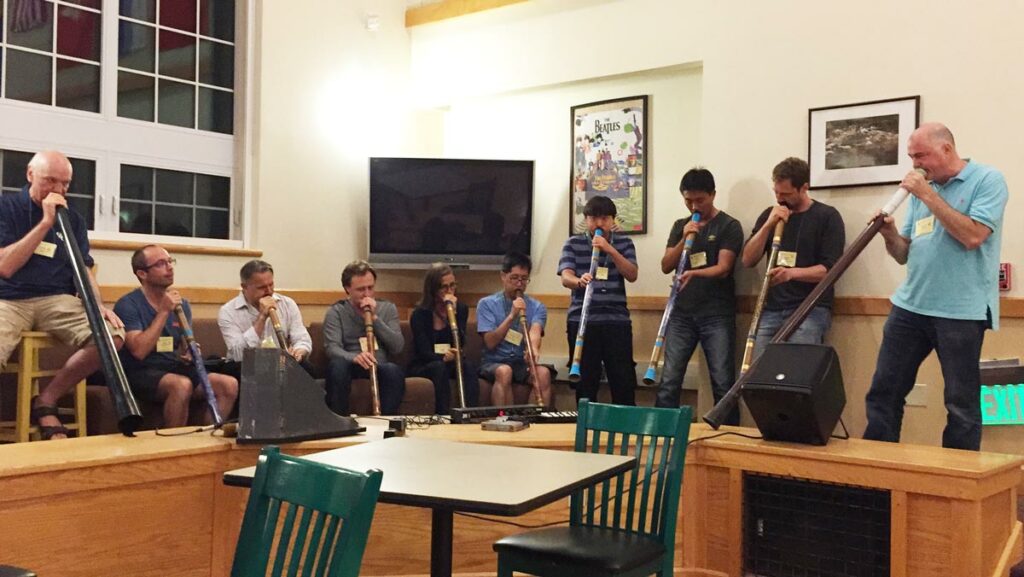
At our imaging Center, Graham was also known for his characteristic quirks. He had a trenchant sense of humor. A note on his door declared, “Build a wall, make America great again” and showed the “wall of sound”—a gargantuan speaker array used by the Grateful Dead at rock concerts in the mid-1970s. He wasted no opportunity to instigate a party and brightened many a gathering by improvising on the keyboard or doctoring guests’ drinks (for he pursued mixology with nearly the same intensity as he did RF engineering). He would be fast asleep in scientific presentations that failed to hold his attention. He was oddly particular about aesthetics: he hated the Calibri font—a default setting in PowerPoint, to the chagrin of his students—but would not be talked out of covering coil elements with neon-green masking tape.
In research, he paid relentless attention to details: a blip in the data he would not miss nor pass over. A blip could lead to discovery—and sometimes did. He was a tinkerer who kept trying new things. Shortly before his death, he developed prototypes of trellis RF detectors that could change shape to adapt to a patient’s anatomy. He readily granted his colleagues and students credit for their work—an important and not always honored principle in academia. He helped get other people’s projects off the ground without regard for reward, as there often was none, and generously mentored his protégés, for whom he fiercely rooted in their professional careers and personal lives alike.
Most of all, Graham Wiggins knew how to find and share joy. You should have seen him with a new prototype in the lab, behind the didgeridoo on stage, or at the piano in our conference room. He is dearly missed.


